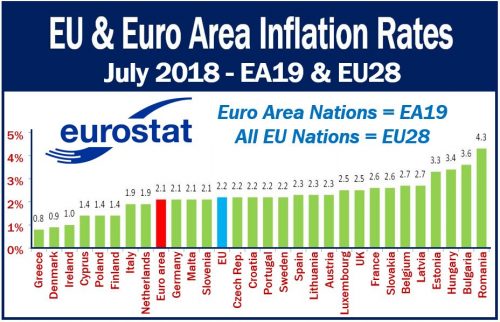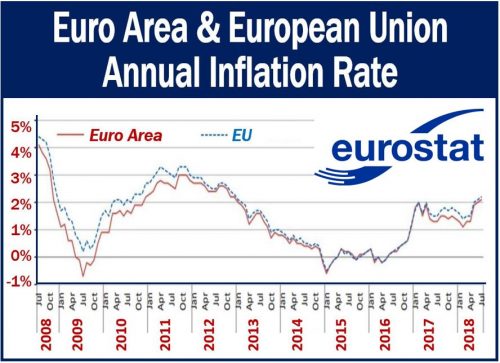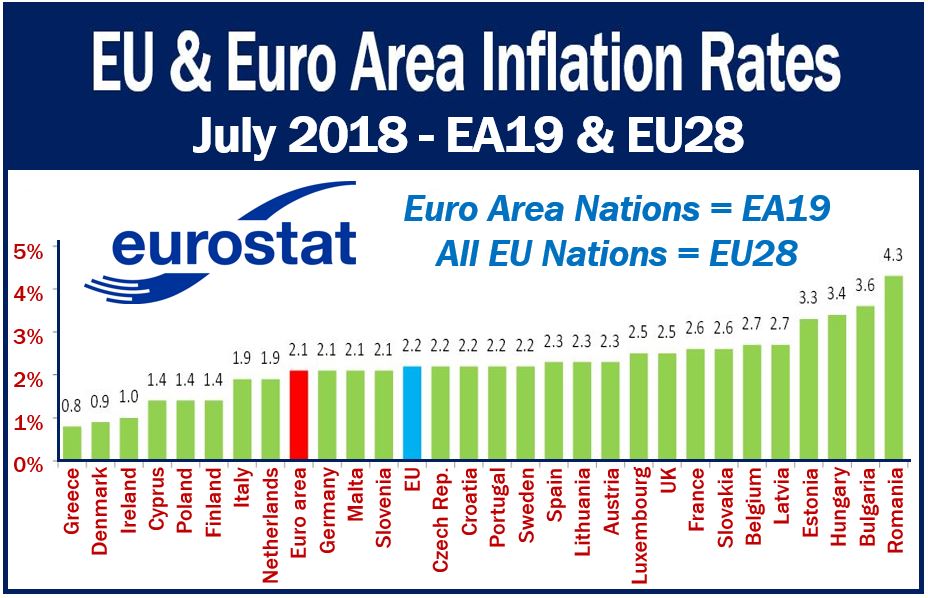The euro area inflation rate rose to 2.1% in July 2018 compared to 2.0% in June 2018. In July 2017, the euro area inflation rate was 1.3%.
The EU28 inflation rate in June 2018 increased to 2.2%, from 2.1% a month earlier. In June 2017, the EU28 inflation rate was 1.5%, says Eurostat, the EU’s statistical office.
Euro area, EA19, and EU28
EU28 stands for the 28 European Member states, including those that do not use the euro as their national currency. The euro area, on the other hand, includes only those 19 European Union countries that adopted the euro as their national currency. We sometimes refer to the euro area as the EA19.
Therefore, Germany, which uses the euro as its national currency, is both an EA19 and EU28 country. The UK, which still uses the pound sterling, on the other hand, is an EU28 but not an EA19 nation.

Lowest inflation rates
The following countries registered the lowest annual inflation rates:
– Greece 0.8%.
– Denmark 0.9%.
– Ireland 1.0%.
Highest inflation rates
The following member states registered the highest annual inflation rates:
– Romania 4.3%.
– Bulgaria 3.6%.
– Hungary 3.4%.
– Estonia 3.3%.
Annual inflation declined in nine Member States in July 2018 compared to June 2018.

Euro area inflation – contributors
The biggest contributors to the euro area inflation rate for July 2018 were:
– Energy +0.89 percentage points.
– Services +0.64 percentage points, food.
– Alcohol and tobacco +0.49 percentage points.
– Non-energy industrial goods +0.12 percentage points.
European Union
The European Union or EU is a political and economic union of 28 Member States. With a population of 510 million, it is the world’s largest single consumer market.
The EU is a free trade area. This means there are no tariffs or quotas between member states. A tariff is a tax that a country levies on imports. A quota is a limit on imports.

